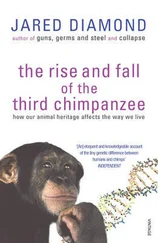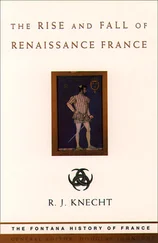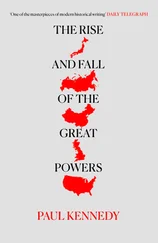Many of the results of rapid industrialization are self-evidently good: people now live longer, and they live better. But some of the leaders who supervised south-east Asia’s industrial revolution became arrogant. They began to believe that their societies were imbued with special ‘Asian values’, and were therefore immune to the political and social pressures that had accompanied previous industrial revolutions. They failed to deal with increasing demands for democracy; the spread of crime and drugs; the ultimately disastrous rise of a class of businessmen better at making friends with politicians than at managing their balance sheets; the destruction of the region’s environment and natural resources; or the need to fend for themselves diplomatically and militarily after the end of the Cold War.
Whether or not south-east Asia recovers economically – as most economists believe it will after the recent financial crisis – the need to manage these challenges will make the bare statistics of growth seem much less important in the early years of the twenty-first century than they did in the 1990s. Most of the challenges are new to the region, but not to the world. As people become educated, they tend to become more vocal in defending their interests and confronting unrepresentative governments. As they move out of villages into impersonal cities, they loosen the ties to families and small communities. Politics, social life, religion, culture and business are all transformed. But south-east Asia’s industrial revolution has been much more rapid than those that went before in Europe, the US and Japan. The result is a delay of many years between the superficial changes – the arrival of television and mobile telephones – and the more profound shifts in the way people think about their families, their communities, their governments and their gods. South-east Asian leaders made a mistake. Instead of seeing this time lag for what it was, they interpreted the continuing weakness of their political opponents and the strength of social traditions as signs that Asia was different and that they would be spared the trauma of modernization.
It was an oversight they would later regret. But even after the collapse of confidence in the region’s developing economies in 1997, there is plenty to boast about in the scale and extent of the south-east Asian ‘miracle’. One country, the city state that is the island of Singapore, has completed the industrial revolution, in the sense that it has caught up with other industrialized nations and even started to overtake them. The average Singaporean is already richer than the average Briton. Singaporeans live in an efficient and highly computerized urban society, eat at expensive restaurants, buy expensive clothes and travel widely, just like their fellow consumers in Japan, the US or Italy.
In Vietnam, Laos, Cambodia and Burma, on the other hand, the revolution has hardly begun. Most people in these countries are still peasant farmers barely able to subsist on what they grow. But even here the trappings and habits of modern life – motorcycles, tarred roads, televisions, discotheques, tall buildings, toilets, shampoo, banks, advertising, passenger aircraft – are spreading fast. As recently as 1992, the Vietnamese capital Hanoi was a quiet town of elegant but dilapidated French villas where the swish of bicycle tyres was only occasionally drowned by the noise of an army truck; peasant women defecated openly on the pavements. There were no taxis and hardly any cars. The few simple restaurants that existed in what was then a typically dour, communist-run city rarely had names – they were known by their street numbers. Today, the city seethes with noisy activity; the streets are crowded with new motorcycles, cars and taxis, and they echo to the sound of construction as new hotels and office blocks spring up alongside bars and karaoke parlours. In northern Cambodia, far from the capital Phnom Penh, villagers watch videos at night on black and white televisions powered by twelve-volt car batteries which are recharged each day in the nearest town. In communist Laos, young women play cheap, handheld computer games on the banks of the Mekong river.
Halfway up the ladder come Malaysia, Thailand, the Philippines and Indonesia. They have a large middle class of relatively wealthy, well-travelled and well-educated citizens living in the big cities; but also millions of poorer people, urban and rural, who are able to enjoy only some of the fruits of the continuing revolution. Malaysia, once known for its plantations of rubber and palm-oil trees, has become the world’s biggest exporter of air conditioners; the world’s tallest buildings, originally designed for Chicago, now tower over the capital Kuala Lumpur. In Thailand, nine tenths of the population live in homes with television; in the Bangkok metropolis, the figure is 97 per cent. If you visit one of the new shopping malls in Jakarta, the Indonesian capital, only the faces of the shoppers and the occasional sign in Bahasa Indonesia betray the fact that you are in Asia rather than Europe or America; there are ‘cybercafés’ serving refreshments and access to the Internet, McDonald’s burger bars, cinemas showing Hollywood films and shops selling the same brand-name clothes you can find in Paris or New York.
The reasons behind south-east Asia’s success – ‘probably the most amazing and beneficent revolution in history’, as one author called the whole east Asian experience 1 – are now generally agreed. Governments adopted sensible economic policies and promoted exports; most of them also provided a reasonably stable political environment which allowed growth to proceed unhindered; ordinary people worked hard and saved a high proportion of their earnings, permitting investment in education and in further industrial expansion; foreign countries helped too, principally by opening their markets to imports from south-east Asia (in the case of the US), and by investing heavily in industry (in the case of Japan). In the 1980s, the end of the Cold War – which had pitted ‘pro-western’ nations such as Thailand against the communist states of Indochina – provided an additional boost to the regional economy. South-east Asia’s success was all the more remarkable because it was not foreseen, and because other parts of the world failed where south-east Asia appeared to have triumphed. Gunnar Myrdal, a Nobel Prize-winning Swedish economist, has become the butt of jokes among Asia experts as a result of his gloomy predictions about south-east Asia in a three-volume, 2,700-page book in the 1960s. 2 Another academic wrote in 1962 of the ‘desperate, and in most cases to date, the losing race to achieve economic growth in the face of consistently mounting population pressure on already inadequate resources’; he also lamented the failure of south-east Asia’s ruling elites to show ‘any notable capacity to solve the problems involved’ in modernizing politics and society. 3 Today, much of Africa is afflicted by war, poverty and disease. Latin America has only recently begun to recover from a long period of stagnation. The Middle East continues to struggle with political instability. Yet south-east Asian countries, after as many as thirty years of strong economic growth, have been extraordinarily successful and – until the crisis that began in 1997 – increasingly self-confident.
Their economic triumphs – preceded by the success of Japan, South Korea, Taiwan and Hong Kong and accompanied by that of China – led to a flurry of predictions about the rise of Asia and the relative decline of the West. The twenty-first century, it was argued, would be the ‘Pacific Century’. Extrapolating recent economic growth rates far into the future, Asians and foreigners forecast – triumphantly, gloomily or with a shrug depending on their point of view – that such and such a group of Asian countries would overtake Europe or the US in the year 2025 or 2020 or 2015. The dangers of extrapolation are well known. In the 1950s the World Bank had made optimistic predictions about both Burma and the Philippines, because they seemed to have the best skills and resources for economic expansion, but they turned out to be among the worst performing south-east Asian economies. Likewise both assumptions on which the ‘Pacific Century’ calculation was based – that Asia would continue to grow and that the West was stagnating or declining – were doubtful; the US and Europe may do better than expected, and Asia may do worse. Two other important points were forgotten in the euphoria over Asia’s performance. First, Asian economies were simply catching up the ground lost to the West in the previous two centuries – and it is easier and quicker to catch up than to take the lead. In 1820 Asia accounted for about 58 per cent of the world economy, a figure which fell steeply to 19 per cent in 1940 after the western industrial revolution before rising again to about 37 per cent in 1992. Even before the crisis of 1997 it was assumed that Asia’s share of the global economy would reach 57 per cent only in the year 2025 – back where it was near the beginning of the industrial age. Second, some of Asia’s economic growth has simply been the result of a temporary ‘bulge’ in the number of people of working age as a proportion of the total population – a typical quirk of modern industrial revolutions. Better healthcare and the fact that death rates fell quickly while birth rates initially remained high mean that there are now large numbers of Asians of working age supporting relatively few elderly dependants. This demographic ‘gift’ to the region’s economies will eventually disappear as the ‘bulge’ moves up the age scale. It will then become a burden as birth rates decline, populations age, and the number of young people in work starts to fall as a proportion of a country’s inhabitants. 4
Читать дальше












